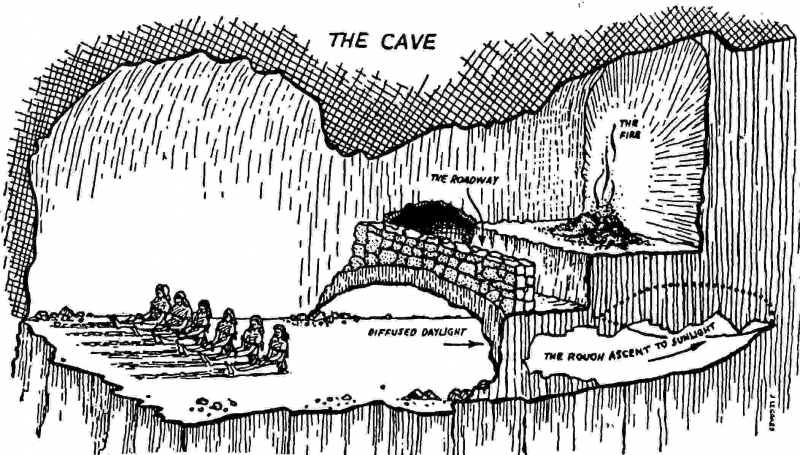Allegory of the Cave

The Allegory of the Cave is likely the most well-known single passage of Plato in the annals of western philosophy. In a discussion in the Republic, Socrates introduces his interlocutor, Glaucon, to a peculiar vision. There were cave dwellers there, unable to move their heads because of their shackles. They are also seeing shadows created on the wall.
In a nearby area where people were supporting objects with fire, their shadows were mirrored by a low wall. Additionally, they were generating noises that reverberated at the cave's entrance. As a result, the folks at the bottom began to hear imitation sounds and see shadow pictures. Then a true exit leading to the cave above, where the truth lay, appeared. Glaucon shouted that the sight was weird, to which Socrates responded that these captives were only viewing shadow images.
The inmates were identifying the things they saw and associated with them. However, the main issue is that what we are seeing is simply a copy of a copy of a copy and not a genuine thing. In essence, they are frequently separated from really recognizing the objects as they make their way from the cave's actual exit to the statue form in the center and then are eventually projected onto the inmates.
One of them is ultimately released after being made to stand up. He makes a full 180-degree spin and looks at the statues, moving one step closer to perceiving things that are more like reality. Moreover, he is momentarily confused by the brilliant light beyond the cave's pits as he pulls himself up a steep and difficult slope.












